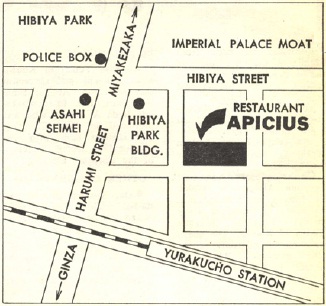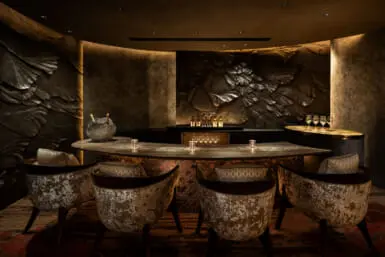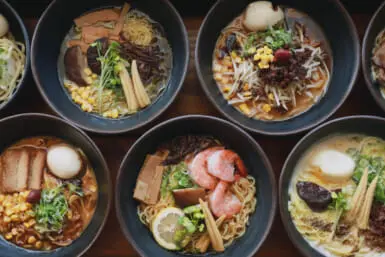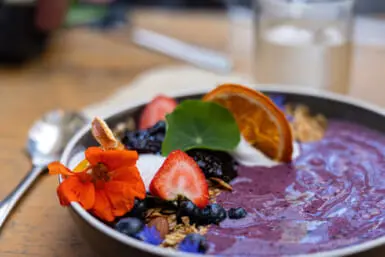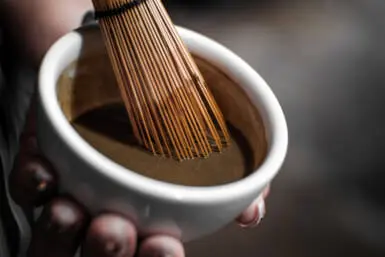Yurakucho’s Apicius — all the way back to the Roman Empire
There are many great restaurants in Tokyo, restaurants that stand in the forefront of the gastronomic world. Among them is Apicius in Yurakucho.
Some Japanese gastronomes claim Apicius is the best. I don’t agree. In my book, there is no such thing as the best. When you reach the realm of the superlative, you enter the vague world of opinion. Something can only be “among the best,” and that’s where I place Apicius.
Mention the name to someone who has never been there, and he’ll probably present you with a pair of raised eyebrows. So, for the edification of those who wonder what the name means, let me explain it.
When you go to the restaurant, you can get a booklet that tells you that Apicius was a Roman epicure who lived in the first century of this era, ran a cooking school, wrote a cookbook and discovered the delights of foie gras. Actually, there were three Apiciuses — Apicii? — and none is considered an epicure by present gastronomic standards. Gluttons, yes; gourmets, no.
The first lived in the time of Sulla, who died in 78 B.C., the second during the reigns of Augustus and Tiberius (30 B.C.-37 A.D.) and the third when Trajan was emperor (98-117 A.D.). Not much is known about the first. The third invented a secret way to preserve oysters.
The most famous was Apicius II, obviously the one the restaurant has in mind. He ran a cooking school and may have written a cookbook. An amphitryon of the first order, he gave banquets that were renowned for their exotic and ostentatious dishes, like ragout of songbirds’ tongues and stuffed sow, half of which was boiled and the other half baked. Eventually, his lavish hospitality caught up with him, and he was forced to face up to financial problems. When he saw that he could count on only 40,000,000 sesterces (about $130,000) annually, he committed suicide. He could not see how he could continue to feed himself and his friends in the opulent way they were accustomed to.
They do not serve ragouts of songbirds’ tongues at Apicius, but who cares when he sees what the menu has to offer? When I went there for the monthly dinner of a gourmet society, I enjoyed dishes far better than avian tongues and half-baked sows.
The dinner which cost ¥15,000, started with Amuse gueule, which is another way of saying canapes, to go with our pre-prandials. The first dish was Asperges vertes, sauce aux clovisses or green asparagus with a winkle sauce, winkles being small mollusks also known as periwinkles. The second was Etuvee de noix de Saint-Jacques au caviar, which translates into scallops with caviar (etuvee is a method of waterless cooking).
Then came a sweet to clear the palate, followed by the main course, a Ris de Veau roti au Foie gras et copetes de raisins or roasted veal sweetbreads with foie gras and a compote of grapes. Various cheeses brought the meal to its coda, with a dessert and coffee ending it.
It is hard to describe the dishes, for how many ways are there to say “delicious”? Suffice it to say that each was a delight, though I don’t think that Apicius II and his greedy-gut friends would have appreciated them. To them more was better, and they would have got up from the table wondering when the meal would begin.
Apicius offers other set courses, one for ¥12,000 and another for ¥20,000 which the restaurant calls its “gourmand menu.” Apicius II would have sneered at it.
For those who prefer not to be chained to a set menu, there are ample a la carte selections. Some of the combinations offered are eye-openers, like Jambon cru farci aux saint-jacques, sauce a la creme de pomme, ¥3,800, which is cured ham stuffed with scallops and applesauce. That should be an interesting dish with which to start a meal. Or Filet de rascasse en Ratatouille, sauce au coulis de poivron rouge, ¥4,800 which the restaurant translates as sauted filet of hog-fish with bacon and red pimento, I don’t know where the ratatouille went. Nevertheless, with or without the ratatouille, it should be a delicious dish.
When I saw Roti de pigeon et de Homard, sauce au vin rouge (pour deux), ¥11,000, I blinked — not at the price, which comes to ¥5,500 a person, but at the combination. Was this the Apicius version of Surf n’ Turf? For it translated into roast of pigeon and Maine lobster with red wine sauce (for two). Then I considered the wine sauce and realize that Chef Tokuo Takahashi knew what he was doing when he concocted that recipe. The red wine solved the taste problem. A solid St. Emilion or Pomerol would do for that.
Apicius offers not only its menu hut also its decor in the “among the best” sweepstakes and wins with credit to spare. From its red-carpeted stairs to its bar with its hunting lodge theme to its dining-room sparkling with polished silver and white tablecloths, and decorated with Cezanne, Chagall, Buffet and Rodin paintings, it is a delight to the eye. Then when the food comes, you feast on fare that knows no better.
A word about its wines, which are kept under excellent conditions in its long, six-ticred cellar: Apicius has a great list that has selections of wine from Bordeaux, Burgundy, Rhone, Loire, Alsace and even a still Champagne, as well as representatives of all the great vintages from the late ’50s on. Some of the prices are discouraging, though not out of line with the Japan wine world. How about a Chateau Mouton Rothschild, 1961, for ¥160,000?
Apicius is situated on the same street as the American Pharmacy and only a short block away, which makes it also only a short block away from the Foreign Correspondents’ Club in the Yurakucho Denki Building, where there is a parking garage. It is open every day except Sunday from 11:30 a.m. to 2 p.m. and from 5:30 to 10 p.m.. with the last order accepted at 9.

